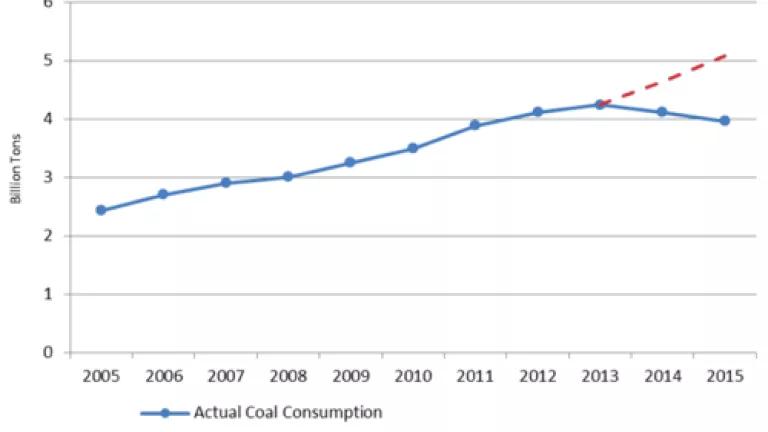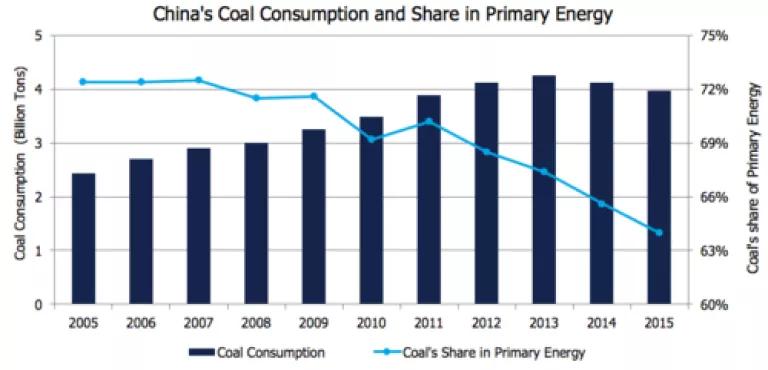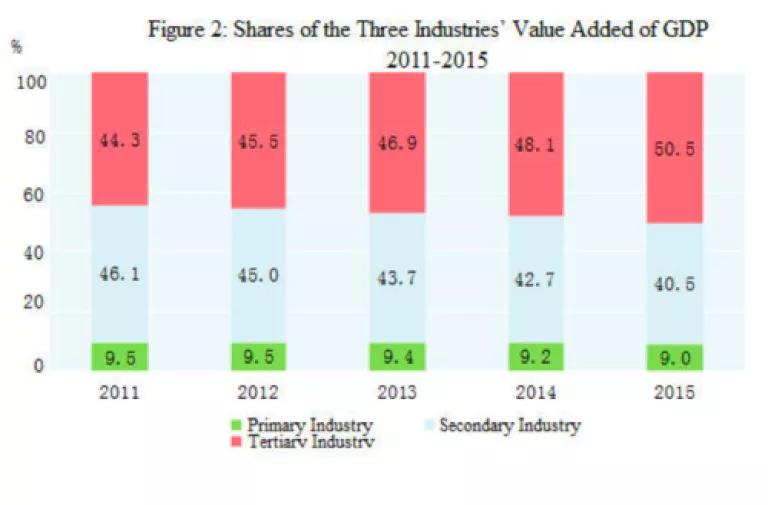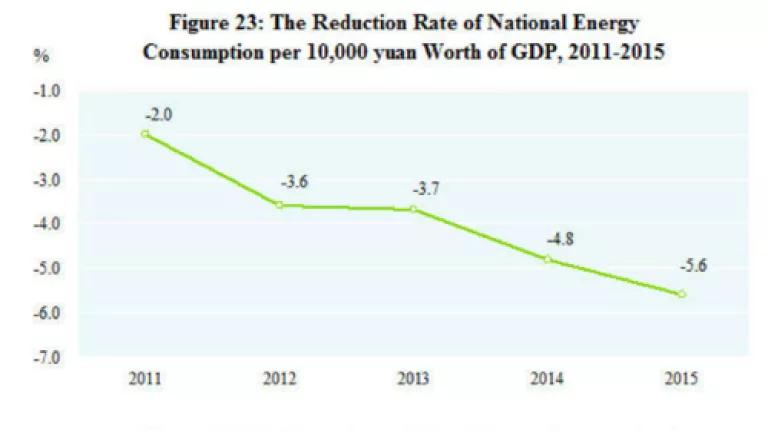It's official: China continued to reduce its coal consumption in 2015 while growing its clean energy

With the release of the 2015 economic and social statistics from the National Bureau of Statistics (in English and Chinese), we now have official confirmation that China's coal consumption fell by 3.7 percent last year, marking the second year in a row that coal consumption has fallen. China's coal consumption peaked in 2013 (see figure) and has been falling since then as non-fossil energy (renewables and nuclear) continue to grow and replace coal-fired power in the electricity sector. Strong air pollution policies require the most polluted regions to reduce their coal consumption, and China's economy is rebalancing away from heavy industry to services and other less-carbon intensive sectors. As a result, China's carbon dioxide emissions from fossil fuel combustion are estimated to have fallen last year, bringing the country closer to its goal of peaking CO2 emissions by 2030. The key for the next five years will be to ensure that China can control its coal consumption from rising again by limiting new coal-consuming projects and integrating greater amounts of renewable energy and energy efficiency.
This coal consumption drop marks a significant reversal from the previous decade where coal consumption was growing at a breakneck pace (see figure). China has moved in recent years to increase the quality of the coal it is burning, and we estimate that the 3.7 percent drop in physical coal consumption is equivalent to around a 1.5 percent drop measured as energy content.
Source: Natural Resources Defense Council analysis based upon China's 2015 Statistical Communiqué from the National Bureau of Statistics and the 2015 Energy Statistical Yearbook.
According to the new data, the share of coal in China's total energy consumption dropped to 64 percent, from 67.4 percent two years earlier, showing that China's efforts to transition from coal to cleaner energy are having an impact, and surpassing the 12th FYP target to reduce coal's share to 65 percent. China has reversed the rapid growth in coal consumption that began in 2003 and ran through 2013, and has begun to decisively reduce the share of coal in its energy structure (see figure below). The non-fossil energy share of primary energy consumption rose to 12 percent, exceeding the 12th FYP target of 11.4 percent.

Source: Natural Resources Defense Council analysis based upon China's 2015 Statistical Communiqué from the National Bureau of Statistics and the 2015 Energy Statistical Yearbook.
As Chinese renewables and climate policy expert Mr. Li Junfeng, the director of the National Center for Climate Change Strategy and International Cooperation, noted recently in a Caijing magazine op-ed, China's energy revolution requires a revolution in its use of coal. Mr. Li notes that China's coal-fired power generation fell about 160 terawatt hours last year, which was entirely compensated for by non-fossil energy: wind increased by 40 TwH, solar by 20 TwH, hydro by 70 TwH, and nuclear by 30 TwH. As a result, coal-fired power's share of power generation fell from 74 percent in 2013 to 69 percent in 2015. China's wind grew by an incredible 32.5 GW and its solar PV by 15 GW in 2015, to a total of 129 GW and 43 GW respectively, and growth is expected to continue to be rapid as it seeks to shift its economy away from coal. This puts China on a path to continuing its reduction in coal consumption.
China's rapidly changing economy and its continued growth in non-fossil energy also means that its CO2 emissions from fossil fuel combustion fell in absolute terms in 2015, which brings China closer to its goal of peaking its CO2 emissions by 2030. The next five years will be a crucial period for China to show that its efforts to transition from coal to clean energy can be decisively met by incorporating greater amounts of non-fossil energy, using energy as efficiently as possible, and shifting from heavy industry and coal to clean energy and lower carbon growth. Minister Xie Zhenhua, China's lead climate envoy, has predicted that the fall in China's coal consumption will lead it to "far surpass" its 2020 carbon intensity reduction targets. Setting a strong national coal consumption cap policy in the 13th Five Year Plan, targeting 3.5 billion tons of coal consumption in 2020, and further reducing coal's share of primary energy consumption to 55 percent, would help China to meet its air quality and climate change targets as quickly as possible and transition the economy to a cleaner and more sustainable path.
One of the factors driving these trends in coal consumption and CO2 emissions is the rapid structural shift taking place in China's economy, as the government rebalances the economy from heavy industry to services, higher technology manufacturing, and consumption. For the first time last year, the service sector made up more than 50 percent of the economy, at 50.5 percent, while industry accounted for 40.5 percent (see figure).

Source: 2015 China Statistical Communiqué
The economic restructuring change also showed up in the 5.6 percent reduction in energy intensity in 2015, the largest percentage reduction in the last five years (see figure).

Source: 2015 China Statistical Communiqué
China's government recently issued policies to reduce excess capacity in the coal mining and iron and steel sectors by 500 million tons of coal and 150 million tons of iron and steel in the next five years. The central government has also ordered provinces to strictly review their prior approvals of new coal-fired power plants to ensure that they are really necessary. These changes will not be easy, but they are necessary as China transitions to a more balanced and sustainable economy, one that will place greater emphasis on clean energy, higher technology manufacturing and innovation.
China's energy transformation continues. The Chinese government can continue to help drive these trends in coal consumption and carbon dioxide emissions by adopting a coal consumption cap in its upcoming five-year plan and continuing to spur renewable energy and energy efficiency.
Thanks to my colleague Jonathan Luan for data analysis and other colleagues for feedback.

